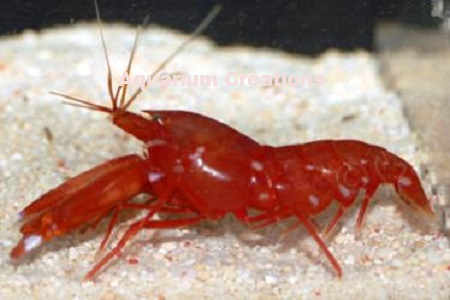Description
The Japanese Snapping Shrimp inhabits rubble bottom areas where it builds a burrow in the sand, rocks and pebbles. From its comfortable surroundings they form a symbiotic relationship with any one of several different goby species, for protection from predators. The Red Snapping Shrimp appreciate a dimly lit area in the tank and often occupy small caves or a hole that meets their needs. The reason they need the protection is because they have very poor vision. If in pairs, one will often stand guard at the burrow while the other is inside. Besides the fun of having them in your aquarium they are a reef tank worker. They spend their day moving the sand substrate around, stirring up all the caught up detritus. Their work continues as they scavenge all the uneaten food they can find. Best saltwater aquarium environment would be a sand substrate, live rock with hiding places, and areas of low light such as caves and overhanging shelves.
Diet and Feeding
Feeding the Japanese Snapping shrimp should not be a problem since they should scavenge the tank for any uneaten food and detritus. They will accept any meaty freeze dried or frozen foods and bottom feeder tablets, as well as scavenge for algae in the aquarium. Snapping Shrimp are intolerant of copper medications and aquarium high nitrate levels.
Level of Care Easy
Reef Compatibility Excellent
|
Copyright 2020 Aquarium Creations Online
Photos are representative of each species. All marine life will be unique and variations should be expected, color and sizes may vary.
*Guarantee Restriction: All of our livestock are guaranteed. However for one or more of these species, they may be marked with a guarantee restriction. If it does, it means the specific animal may not handle stress from environmental conditions well. These stresses can include poor water quality, harassment from tank mates or confined aquarium conditions. When stressed, these species can lose the ability to ward off infection and disease. Other species may be listed as Restricted because they have such specialized feeding requirements that is difficult recreate in a aquarium and may succumb to malnutrition.
|
|



